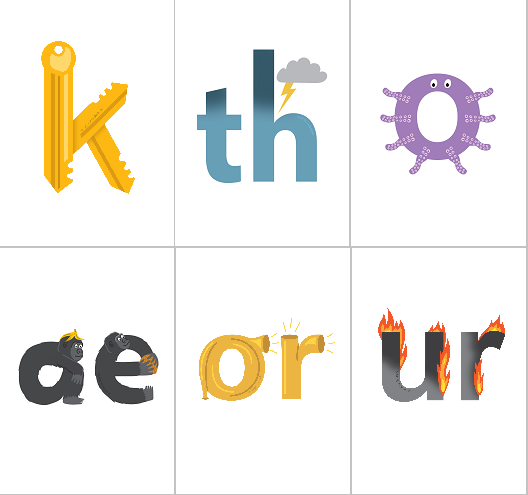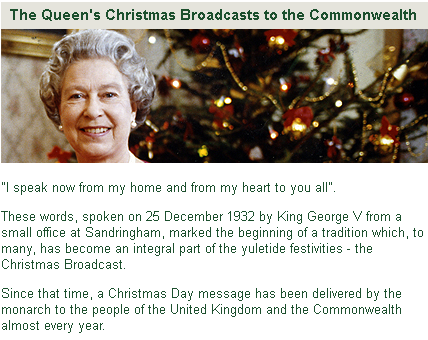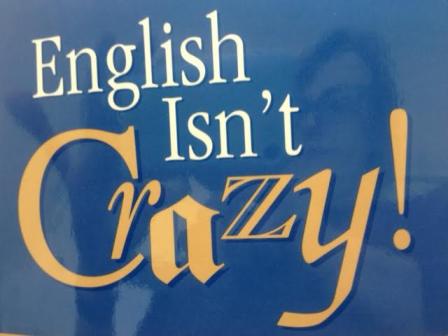Embedded Picture Mnemonic picture files
0 RepliesSince devising the Spelfabet Embedded Picture Mnemonics, illustrator Cat Macinnes and I have received many requests for products containing them: bookmarks, placemats, friezes, flip charts, cards and posters of different sizes, slideshows, you name it. They’ll even make an appearance on The US Reading League’s Reading Buddies TV show at some stage. The Science of Reading community is a creative one.
Sadly, we don’t have capacity to print, store and mail out lots of hard copy resources containing our mnemonics. If you know of an interested publisher, we’d love to hear from them! Even designing and producing all the downloadable resources people have suggested would be a full-time job for quite a while. We aren’t designers, and already have full-time jobs.
We’re therefore making high-resolution versions of the picture files (.png files, for both PC and Apple) available for people to download and use in creating resources for their own students/caseloads/children. This should make it easy to organise them into any phonics teaching sequence, and print customised materials for any group of beginning readers. Click here to download a zipped folder of the whole set.
Over time, we’ve created alternate versions of some mnemonics, thanks to feedback from purchasers, and in an effort to cater to a surprisingly large audience. Our original ‘e/egg’, ‘o/orange’ and ‘u/undies’ mnemonics were OK for Australian English, but ‘e/echo’, ‘o/octopus and ‘u/up’ were needed for speakers of US English. Recently we’ve discovered that some people aren’t keen on ‘y/yoga’, so we’ve added this nice y/yawn mnemonic to the set.
The zipped folder of picture files includes all the mnemonics we’ve produced to date (except the ‘th/path’ and ‘th/weather’ ones, which weren’t a hit), so when there’s a choice, please use the one that suits you best. In parts of rural Australia where doors aren’t often locked, k/kangaroo is probably a better choice than ‘k/key’. On a surf-mad coast ‘ur/surf’ might make more sense than ‘ur/burn’. In the US, ‘air/hair’ and ‘ear/gears’ aren’t needed, but ‘aw/claw’ is, and ‘wh/whale’ might be (in places where ‘witch’ and ‘which’ aren’t homophones).
When you introduce ‘long’ vowels, you might like to make little strips for student desks like this…
…or a strip like this might suit your students/teaching sequence better:
Hooray, everyone will be able to tailor the set to their accent/sequence/needs, including people who speak Englishes other than Australian, British and American. Cat already put time and talent into drawing all the mnemonics, so you might as well use whichever suit you best (yes, we prefer ‘u/undies’, and people keep asking us to bring it back, ha ha).
Artists should be paid properly for their work, so please respect Cat’s copyright and abide by the terms of use included in the pack. Pricing is based on the assumption that each teacher/therapist/parent who buys the files will use them as they see fit with their class/caseload/family members, and not share them with other professionals or use them for commercial purposes. It’s OK for parents to share printouts with little cousins or the kid next door, but if a school with five Early Years teachers wants to use them in a range of resources across five Early Years classrooms, the school should buy five copies.
The picture files are in .png format, which is the best format for storing high-resolution artwork. They are in a zipped folder which looks like this in the Downloads area of the Spelfabet shop:
Download it to your computer, and you’ll be able to unzip it and access the files, and save them somewhere easy to find and use. Don’t panic if you double-click on a file and it opens in your default picture program and looks a bit weird. The pictures should look as you expect when you drop them into documents. Please reduce picture file size first if they’re too big for your purposes, so the resources you make from them don’t take up lots of space on your computer or take ages to print out. Like adding salt when cooking, it’s easy to make files smaller and lower-resolution, but not reverse the process.
As reading researchers might have predicted, lots of people have told us they’ve been surprised how quickly children have learnt sound-letter relationships using the Spelfabet Embedded Picture Mnemonics. We hope that’s true of any young beginners you try them with, and that you find them quick and easy to turn into great, affordable resources that suit your accent, location and teaching sequence.
New things at Spelfabet
20 Replies
The COVID-19 pandemic knocked most of my plans sideways and sent me into too-tired-to-blog mode for most of the last year, but here are five new things we’ve been working on:
- Intensive school holiday and Saturday groups for ages 6-8
- New, improved Embedded Picture Mnemonics (Aust/UK and US versions)
- Version 3 Spelfabet workbooks
- Local Community of Practice (INMELLCoP)
- Decodable text writing interface
Free Learning Difficulties Including Dyslexia webinars
8 Replies
La Trobe University and the Victorian Department of Education have this year collaborated to run workshops across Victoria about learning difficulties including dyslexia. The workshops have been available to teachers and other Department of Education staff.
The information from these workshops is now being made available free online via YouTube as webinars. Wow. Amazingly generous of both the University and the Department, since most professional development of this type and quality is paywalled. So thanks to all involved.
The webinars are presented by Dr Tanya Serry from La Trobe University, and the workshops on which they are based were developed with Professor Pamela Snow, Ms Emina McLean and Assistant Professor Jane McCormack also from La Trobe, and Dr Lorraine Hammond from Edith Cowan University in WA. (more…)
What kind of knowledge is needed for good spelling?
4 Replies
A lot has been written by philosophers and in Dilbert cartoons about different types of knowledge.
Often these are described using terms like “explicit” versus “tacit” or “declarative” versus “procedural” knowledge. What matters most for spelling?
Declarative versus procedural knowledge
Explicit, declarative knowledge is theoretical information about a subject e.g. that we use a base 10 number system, and that our Solar System has 8 planets (sorry, Pluto). Libraries, databases and the internet are full of it.
Procedural knowledge is often harder to describe (more tacit) and more practical. It’s knowing how to do something, like tie up a shoelace, play the guitar or ride a bike.
I have quite a bit of explicit, declarative knowledge about how to play brilliant tennis (yes, the Australian Open men’s final is on, but we love both Roger and Raffa, so who to barrack for?!) but despite years of trying (our tiny country town didn’t have enough kids to field a team without unco asthmatic me), I never managed to convert this into much procedural knowledge.
I’ve been nerdily immersed in spelling books lately, and have realised that most books about spelling are full of explicit, declarative knowledge, but aren’t necessarily much help with the “how”, or what we should be doing to build tacit, procedural knowledge of spelling. (more…)
Speak like the Queen when spelling long words
1 Replies
Recently I told a tweenage student to “speak like the Queen” when spelling long words, and her mother said “I don’t think you’ve ever heard the Queen speak, have you?” (headshake). “We must listen to the Queen’s Christmas Message this year”.
The Queen’s Christmas Message was A Thing Australians listened to, before we had 27,000 TV channels and our own national anthem, and before Queen Elizabeth the Second, by the Grace of God Queen of this Realm and of Her other Realms and Territories, Head of the Commonwealth, Defender of the Faith became so elderly she stopped going on telly much.
Fortunately, not only is Her Majesty now on Twitter, but her Christmas messages are on Youtube, in case any kids you know want to listen to them, with a view to imitating her wonderfully rounded vowels and crisp and precise consonants while spelling. Here’s last year’s, skip to 0:45 on the video clock for where she starts talking:
I’m sure if we all enunciated words like “sculpture”, “reconciliation”, “sacrifice”, “captured”, “referendum” and “Ebola” like Her Majesty, we’d always spell them right. (more…)
Reading Bear
2 Replies
Reading Bear is an American website containing free phonics and vocabulary activities which are designed for young children, but aren’t actually very teddy-bearish, so could be used with older catch-up learners too.
The idea came from Larry Sanger, one of the people behind Wikipedia – the sort of person who makes the rest of us feel inadequate, and recalls the Tom Lehrer joke, “When Mozart was my age, he had already been dead for three years”.
Funding for the site came from an anonymous donor, and lots of volunteers and other good people contributed with the intention of creating something great to help little English-speaking kids around the world learn to read, and build their vocabularies. Nice one.
You can use the site without logging in (she wrote, aware that she just lost a lot of readers who are now going to click here and explore the site for themselves), but if you do tell the site your email address and a password, then you’re instantly logged in and can start adjusting the settings and recording your progress.
English Isn’t Crazy!
0 Replies
“English Isn’t Crazy! The Elements Of Our Language and How to Teach Them” is a neat little book by US author Diana Hanbury King, who’s been working with struggling readers and spellers since before most of us were born.
It’s written for teachers who want to know more about the English language.
The book gives a thumbnail sketch of how the English we speak today has changed over the centuries, from Proto-Indo-European, through the Celts, Romans, Anglo-Saxons, Danes, Old English, the Normans, Middle English, the Classical Revival, Modern English and American English. It’s not as hilarious as the UK Open University’s History of English in 10 Minutes, but is more consistently factual.
A very easy read
I especially appreciated its simplicity and readability, having waded through David Crystal’s dense, 584 page The Stories of English, an authoritative enough tome to have its own Wikipedia entry (since our Environment Minister researched the link between climate change and bushfires on Wikipedia, we Aussies are making more Wikipedia jokes).
“English Isn’t Crazy” is 120 pages long, including seven appendices and a bibliography, and it’s a very easy read. I got through it in a couple of hours. Perfect for teachers easing back from holidays, and parents wanting to help kids understand English spelling complexity.







